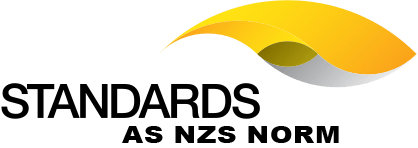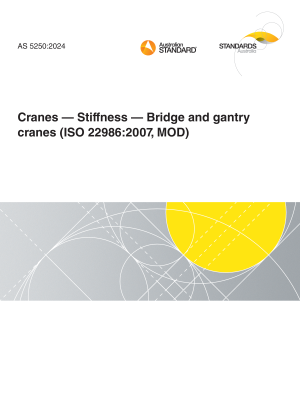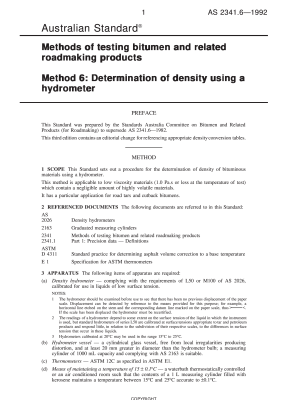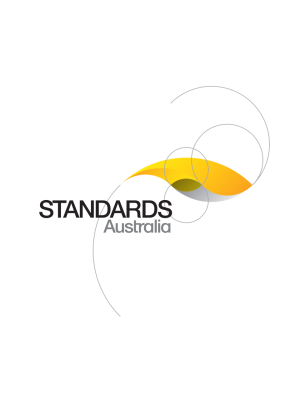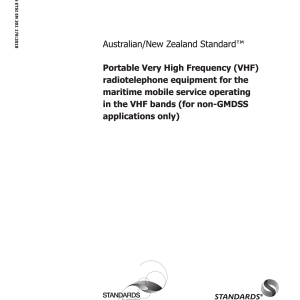Header
About this publication
Preface
Intellectual Property Rights
Foreword
Modal verbs terminology
1 Scope
2 References
2.1 Normative references
2.2 Informative references
3 Definitions, symbols and abbreviations
3.1 Definitions
3.2 Symbols
3.3 Abbreviations
4 General and operational requirements
4.1 Construction
4.2 Controls and indicators
4.3 Microphone and loudspeaker
4.4 Safety precautions
4.5 Labelling
5 Technical requirements specifications
5.1 Environmental profile
5.2 Conformance requirements
5.2.1 Switching time
5.2.2 Class of emission and modulation characteristics
6 General conditions of measurement
6.1 Arrangements for RF connections to the equipment
6.1.1 RF connections to integral antenna equipment
6.1.2 RF connection to equipment with a detachable antenna
6.2 Arrangements for test signals applied to the receiver input
6.3 Squelch
6.4 Normal test modulation
6.5 Artificial antenna
6.6 Arrangements for test signals applied to the transmitter input
6.7 Test channels
6.8 Test conditions, power sources and ambient temperatures
6.8.1 Normal and extreme test conditions
6.8.2 Test power source
6.9 Normal test conditions
6.9.1 Normal temperature and humidity
6.9.2 Normal power sources
6.9.2.1 Battery power source
6.9.2.2 Other power sources
6.10 Extreme test conditions
6.10.0 General
6.10.1 Extreme temperatures
6.10.2 Extreme values of test power sources
6.10.2.1 Battery power source
6.10.2.2 Other power sources
6.11 Procedure for tests at extreme temperatures
6.12 Reference bandwidths for spurious measurements
7 Environmental tests
7.1 Procedure
7.2 Performance check
7.3 Drop test
7.3.1 Definition
7.3.2 Method of measurement
7.3.3 Requirement
7.4 Temperature tests
7.4.1 Definition
7.4.2 Dry heat
7.4.2.1 Definition
7.4.2.2 Method of measurement
7.4.2.3 Requirement
7.4.3 Damp heat
7.4.3.1 Definition
7.4.3.2 Method of measurement
7.4.3.3 Requirement
7.4.4 Low temperature cycle
7.4.4.1 Definition
7.4.4.2 Method of measurement
7.4.4.3 Requirement
8 Transmitter
8.1 Frequency error
8.1.1 Definition
8.1.2 Method of measurement
8.1.3 Limits
8.2 Carrier power
8.2.1 Definitions
8.2.2 Method of measurement
8.2.3 Limits, Normal and extreme test conditions
8.3 Frequency deviation
8.3.1 Definition
8.3.2 Maximum permissible frequency deviation
8.3.2.1 Method of measurement
8.3.2.2 Limits
8.3.3 Reduction of frequency deviation at modulation frequencies above 3 kHz
8.3.3.1 Method of measurement
8.3.3.2 Limits
8.4 Sensitivity of the modulator, including microphone
8.4.1 Definition
8.4.2 Method of measurement
8.4.3 Limits
8.5 Audio frequency response
8.5.1 Definition
8.5.2 Method of measurement
8.5.3 Limit
8.6 Audio frequency harmonic distortion of the emission
8.6.1 Definition
8.6.2 Method of measurement
8.6.2.1 RF Coupling to the test demodulator
8.6.2.2 Normal test conditions
8.6.2.3 Extreme test conditions
8.6.3 Limits
8.7 Adjacent channel power
8.7.1 Definition
8.7.2 Method of measurement
8.7.3 Limits
8.8 Conducted spurious emissions conveyed to the antenna
8.8.1 Definition
8.8.2 Method of measurement
8.8.3 Limit
8.9 Cabinet radiation and conducted spurious emissions other than those conveyed to the antenna
8.9.1 Definitions
8.9.2 Method of measurement
8.9.3 Limits
8.10 Residual modulation of the transmitter
8.10.1 Definition
8.10.2 Method of measurement
8.10.3 Limit
8.11 Transient frequency behaviour of the transmitter
8.11.1 Definitions
8.11.2 Method of measurement
8.11.3 Limits
9 Receiver
9.1 Harmonic distortion and rated audio frequency output power
9.1.1 Definition
9.1.2 Methods of measurement
9.1.3 Limits
9.2 Audio frequency response
9.2.1 Definition
9.2.2 Method of measurement
9.2.3 Limits
9.3 Maximum usable sensitivity
9.3.1 Definition
9.3.2 Method of measurement
9.3.3 Limits
9.4 Co-channel rejection
9.4.1 Definition
9.4.2 Method of measurement
9.4.3 Limit
9.5 Adjacent channel selectivity
9.5.1 Definition
9.5.2 Method of measurement
9.5.3 Limits
9.6 Spurious response rejection
9.6.1 Definition
9.6.2 Method of measurement
9.6.3 Limit
9.7 Intermodulation response
9.7.1 Definition
9.7.2 Method of measurement
9.7.3 Limit
9.8 Blocking or desensitization
9.8.1 Definition
9.8.2 Method of measurement
9.8.3 Limit
9.9 Conducted spurious emissions
9.9.1 Definition
9.9.2 Method of measurement
9.9.3 Limit
9.10 Radiated spurious emissions
9.10.1 Definition
9.10.2 Method of measurements
9.10.3 Limit
9.11 Receiver noise and hum level
9.11.1 Definition
9.11.2 Method of measurement
9.11.3 Limit
9.12 Squelch operation
9.12.1 Definition
9.12.2 Method of measurement
9.12.3 Limits
9.13 Squelch hysteresis
9.13.1 Definition
9.13.2 Method of measurement
9.13.3 Limit
10 Testing for compliance with technical requirements
10.1 Environmental conditions for testing
10.2 Interpretation of the measurement results
Annex A
Annex B
B.1 Power measuring receiver specification
B.1.0 General
B.1.1 IF filter
B.1.2 Attenuation indicator
B.1.3 rms value indicator
B.1.4 Oscillator and amplifier
Annex C

